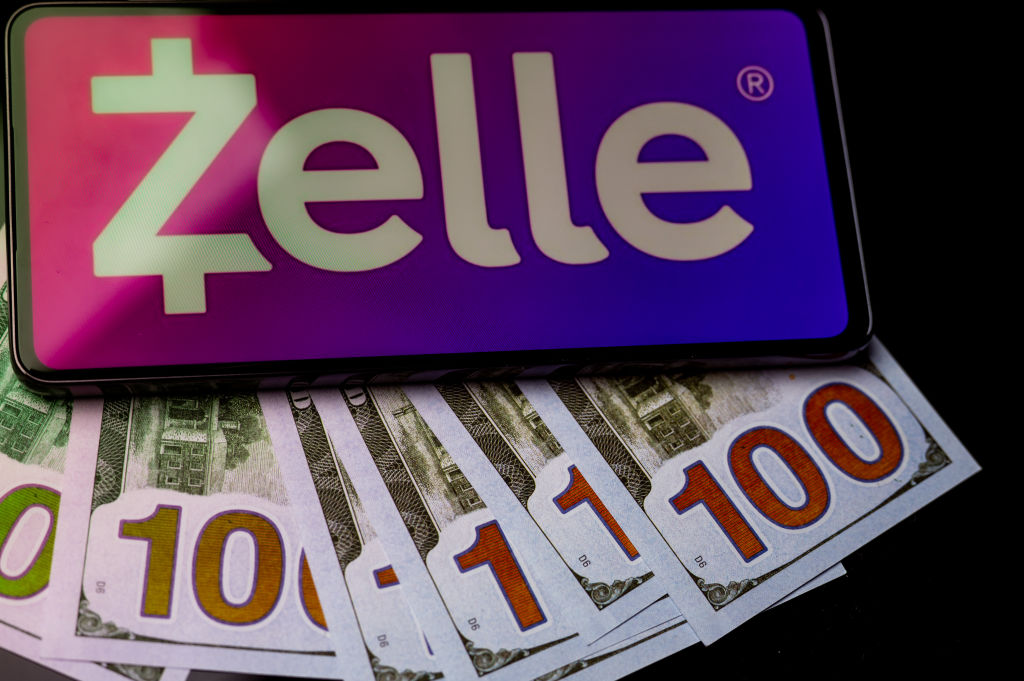After scammers spent years swiping hundreds of millions from Zelle users by inducing people to authorize fraudulent payments, lawmakers were horrified to discover in fall 2022 that "the vast majority" of defrauded Zelle users never got their money back. To regulators, it seemed like Zelle was shirking responsibility for policing this increasingly common fraudulent activity on its payments platform.
But now, Zelle has changed its mind and is working harder to protect users from imposter scams. On Monday, Zelle confirmed that at the end of June, the payments app finally started refunding users targeted by scammers.
According to Reuters, this was possible because Zelle's network operator, Early Warning Services (EWS), found a solution that lets Zelle's network of 2,100 financial firms off the hook for reimbursing transactions where "potentially billions of dollars" might be stolen by imposter scammers. Instead of expecting financial partners to foot the bill to cover this fraudulent activity, Zelle simply "implemented a mechanism that allows banks to claw back funds from the recipient's account and return them to the sender."
"As the operator of Zelle, we continuously review and update our operating rules and technology practices to improve the consumer experience and address the dynamic nature of fraud and scams," an EWS spokesperson told Ars. "As of June 30, 2023, our bank and credit union participants must reimburse consumers for qualifying imposter scams, like when a scammer impersonates a bank to trick a consumer into sending them money with Zelle. The change ensures consistency across our network and goes beyond legal requirements."
This is the first time EWS has provided details on its new policy to refund victims of the Zelle imposter scam, Reuters reported. It's a major policy reversal that Reuters said was likely prompted to spare banks and payments apps from stricter regulatory interventions that would require refunds for every scam victim. (Currently, the US only requires banks to refund any fraudulent payments made without customers' authorization.)
The chief fraud risk officer at EWS, Ben Chance, reiterated to Reuters that Zelle's new policy goes "well above existing legal and regulatory requirements."
It's unclear if regulators will be satisfied leaving this matter to banks and payment apps, though. There may be just too many people using payment apps to ignore gaps in laws intended to protect against financial fraud. Between 2018 and 2022, peer-to-peer (P2P) payments quadrupled in the US, the Consumer Financial Protection Bureau (CFPB) reported, and by 2027, P2P payments "may reach nearly $1.6 trillion."
Meanwhile, as P2P payments have increased substantially, these imposter scams have become "the most-reported scam," targeting users "across all payment methods," the Federal Trade Commission (FTC) reported. In total, the FTC said that scam victims lost $2.6 billion last year alone.
The CFPB previously mulled new laws that would require lenders to reimburse scam victims, but a person familiar with the matter told Reuters that the CFPB may no longer be considering new protections, because Zelle's recent changes "have so far satisfied the agency." However, Senator Elizabeth Warren (D-Mass.)—who spearheaded the probe into Zelle imposter scams—told Reuters that she is not likely to stop monitoring the situation any time soon.
"Zelle's platform changes are long overdue,” Warren said. "The CFPB is standing with consumers, and I urge the agency to keep the pressure on Zelle to protect consumers from bad actors."
Imposter scams still hard to police
Last year, Consumer Watchdog president Jamie Court told Ars that beyond requiring refunds to scam victims, the CFPB should require payment platforms to improve the policing of imposter scams and to better educate users about how to recognize scams.
Zelle—which Reuters reported processed $629 billion in payments in 2022—has said that 99.9 percent of money transfers go through as users intended, without a fraud or scam report. Because of this, EWS's Chance told Reuters that fraudulent activity is considered low on Zelle, and despite lawmakers' concerns that imposter scams are increasing, EWS has previously claimed that Zelle fraud is going down, not spiking. In 2022, an EWS spokesperson told Ars that while "Zelle usage has grown significantly since its launch, from 247 million transactions in 2017 to 1.8 billion in 2021," the "proportion of fraud and scams has steadily decreased” through that growth period. More recently, an EWS spokesperson told Ars that "Zelle has driven down fraud and scam rates as a result of these prevention and mitigation efforts consistently from 2022 to 2023.”
Chance told Reuters that fraud is decreasing on Zelle, because EWS continues to "evolve" safety controls that have led to a "step-change reduction" in fraud and scam rates in 2023. But Chance would not provide details on how the controls work or how much rates have fallen.
Rather than stricter regulations in the financial sector, EWS feels that banks need more law enforcement resources to improve current strategies for imposter scam policing, Chance told Reuters. In the meantime, likely due to regulatory and competitive pressures, Zelle has taken some additional steps to enhance user safety on the platform on its own since Warren's probe sparked a public outcry in 2022.
Last month, Zelle partnered with a private nonprofit, the Better Business Bureau Institute for Marketplace Trust (BBB Institute), to launch an education campaign on payment safety. In a Zelle press release, Chance said that "empowering consumers with the knowledge to use payment platforms safely is a top priority" for EWS.
The press release included tips shared with Zelle and other payment app users. The tips caution anyone targeted by imposter scams—especially scams where a bad actor might impersonate a trusted institution (like a bank or even the FTC)—to be suspicious of any unsolicited calls, texts, or emails requesting payments and avoid making snap decisions to authorize any payments. When in doubt, users should contact sources suspected of being impersonated directly, the campaign said, rather than replying directly to imposters' unsolicited payment requests.
Zelle has also launched a similar education campaign targeting elderly users.
It's unclear how many payment app users these campaigns have reached, but the BBB Institute told Ars that its education campaign launched with Zelle "has generated more than 6 million impressions so far across YouTube and Facebook."
Those platforms provide "the quickest and most impactful way to deploy our message," the BBB Institute told Ars. "We’re thrilled with that reach for our shared goal of raising awareness about digital payment scams."
The BBB also has a scam tracker where cash app scams can be tracked. It's a significant resource where users can report any bad experiences, but it's not necessarily the easiest database to navigate for anyone looking to verify if they're being targeted by known scammers. With more than 300,000 entries added in the past two months alone, scam victims would likely struggle to identify similar scams without dedicating significant time to scan the database.
Because payment app users may not know that they can be refunded for these scams and banks may not enforce their own policies, a senior attorney at the National Consumer Law Center, Carla Sanchez-Adams, told Reuters that the best way to protect consumers from imposter scams is still mandating fraud protections.
This story was updated on Nov. 13 to include statements from an Early Warning Services spokesperson.


